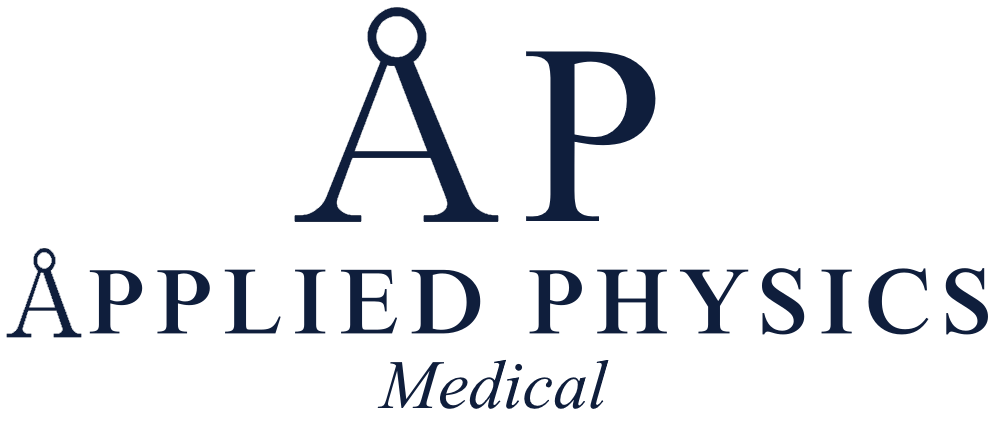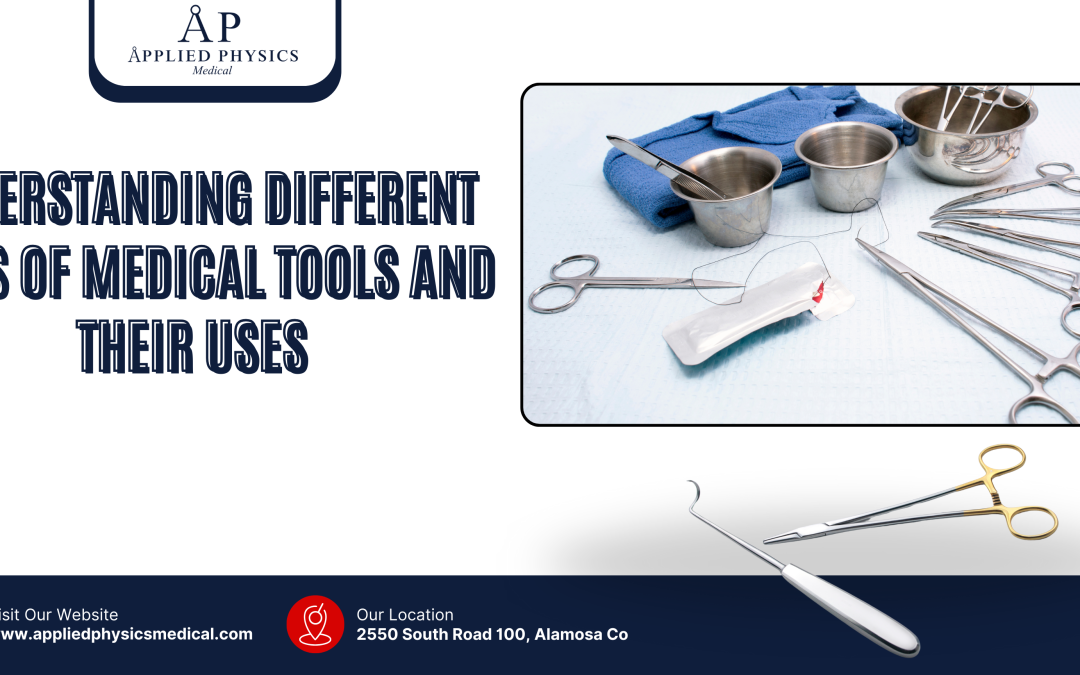Introduction
Diagnostic Medical Tools are vital devices employed by healthcare professionals to diagnose, treat, and monitor patients. They exist in diverse forms and serve distinct purposes, encompassing diagnostic, therapeutic, and monitoring functions. A comprehensive understanding of the various types of medical instruments and their applications is essential for healthcare professionals to deliver precise and effective care to their patients.
Key Takeaways
- Medical tools are essential for diagnosing, treating, and monitoring various health conditions.
- Diagnostic medical tools such as stethoscopes and blood pressure monitors are used to identify illnesses and conditions.
- Surgical medical tools like scalpels and forceps are used for performing surgical procedures and operations.
- Therapeutic medical tools such as nebulizers and dialysis machines are used to treat and manage health conditions.
- Monitoring medical tools like ECG machines and pulse oximeters are used to track and monitor patients’ vital signs and health status.
Diagnostic Medical Tools and Their Uses
Diagnostic medical tools are used to identify and diagnose medical conditions in patients. These tools include stethoscopes, otoscopes, ophthalmoscopes, blood pressure monitors, thermometers, and various imaging equipment such as X-rays, CT scans, and MRIs. Stethoscopes are used to listen to the sounds of the heart, lungs, and other internal organs, while otoscopes and ophthalmoscopes are used to examine the ears and eyes, respectively.
Blood pressure monitors and thermometers are used to measure vital signs, while imaging equipment provides detailed images of the internal structures of the body. These diagnostic tools are essential for healthcare professionals to accurately diagnose medical conditions and develop appropriate treatment plans for their patients. Diagnostic medical tools play a crucial role in the early detection and diagnosis of medical conditions, allowing healthcare professionals to provide timely and effective treatment to their patients.
Without these tools, it would be challenging to identify and diagnose various medical conditions, leading to delays in treatment and potentially worsening the patient’s condition. Therefore, diagnostic medical tools are indispensable in the healthcare setting and are essential for providing high-quality patient care.
Surgical Medical Tools and Their Uses
Surgical medical tools are used during surgical procedures to perform various tasks such as cutting, dissecting, suturing, and grasping tissues. These tools include scalpels, forceps, scissors, retractors, needle holders, and surgical sponges. Scalpels are used to make incisions, while forceps are used to grasp and hold tissues.
Scissors are used to cut tissues, while retractors are used to hold back tissues and organs during surgery. Needle holders are used to hold and manipulate surgical needles, while surgical sponges are used to absorb blood and other fluids during surgery. These surgical tools are essential for performing safe and effective surgical procedures and are crucial for the success of the operation.
Surgical medical tools are indispensable in the operating room and play a vital role in ensuring the safety and success of surgical procedures. Without these tools, it would be impossible to perform surgical procedures with precision and accuracy, leading to potential complications for the patient. Therefore, surgical medical tools are essential for healthcare professionals to perform surgical procedures safely and effectively, ultimately improving patient outcomes.
Therapeutic Medical Tools and Their Uses
| Medical Tool | Category | Use |
|---|---|---|
| Stethoscope | Diagnostic | Used to listen to sounds within the body, such as heartbeats and lung sounds |
| Otoscope | Diagnostic | Used to examine the ears and eardrum |
| Sphygmomanometer | Diagnostic | Used to measure blood pressure |
| Scalpel | Surgical | Used for precise surgical incisions |
| Forceps | Surgical | Used for grasping and holding objects during surgical procedures |
Therapeutic medical tools are used to treat medical conditions and promote healing in patients. These tools include medication administration devices such as syringes, needles, and IV catheters, as well as therapeutic equipment such as nebulizers, oxygen tanks, and physical therapy devices. Medication administration devices are used to deliver medications to patients through various routes such as intravenous, intramuscular, subcutaneous, and oral.
Therapeutic equipment such as nebulizers and oxygen tanks are used to deliver respiratory treatments to patients with respiratory conditions, while physical therapy devices are used to rehabilitate patients with musculoskeletal injuries or conditions. These therapeutic tools are essential for healthcare professionals to provide effective treatment and promote healing in their patients. Therapeutic medical tools play a crucial role in the treatment and management of various medical conditions, allowing healthcare professionals to alleviate symptoms and improve the overall well-being of their patients.
Without these tools, it would be challenging to provide effective treatment to patients with medical conditions, leading to prolonged suffering and decreased quality of life. Therefore, therapeutic medical tools are indispensable in the healthcare setting and are essential for promoting healing and improving patient outcomes.
Monitoring Medical Tools and Their Uses
Monitoring medical tools are used to track and monitor vital signs and other physiological parameters in patients. These tools include electrocardiogram (ECG) machines, pulse oximeters, blood glucose monitors, and cardiac monitors. ECG machines are used to monitor the electrical activity of the heart, while pulse oximeters are used to measure the oxygen saturation levels in the blood.
Blood glucose monitors are used to measure blood sugar levels in patients with diabetes, while cardiac monitors are used to track the heart’s rhythm and detect any abnormalities. These monitoring tools are essential for healthcare professionals to assess the patient’s condition and make informed decisions about their care. Monitoring medical tools plays a crucial role in tracking the patient’s vital signs and physiological parameters, allowing healthcare professionals to detect any changes or abnormalities in their condition.
Without these tools, it would be challenging to monitor patients effectively, leading to potential complications or adverse events. Therefore, monitoring medical tools is indispensable in the healthcare setting and is essential for ensuring the safety and well-being of patients.
Imaging Medical Tools and Their Uses
Imaging medical tools are used to visualize the internal structures of the body and diagnose medical conditions in patients. These tools include X-rays, CT scans, MRIs, ultrasounds, and PET scans. X-rays use electromagnetic radiation to produce images of the bones and internal organs, while CT scans use a series of X-ray images to create detailed cross-sectional images of the body.
MRIs use magnetic fields and radio waves to produce detailed images of the body’s soft tissues, while ultrasounds use high-frequency sound waves to create images of the internal organs. PET scans use a radioactive tracer to create images of the body’s metabolic activity. These imaging tools are essential for healthcare professionals to visualize the internal structures of the body and diagnose various medical conditions accurately.
Imaging medical tools play a crucial role in diagnosing medical conditions and developing appropriate treatment plans for patients. Without these tools, it would be challenging to visualize the internal structures of the body and accurately diagnose medical conditions, leading to delays in treatment and potentially worsening the patient’s condition. Therefore, imaging medical tools are indispensable in the healthcare setting and are essential for providing high-quality patient care.
Emerging Medical Tools and Their Uses
Emerging medical tools refer to innovative technologies that are being developed or introduced into clinical practice to improve patient care. These tools include robotic surgical systems, telemedicine platforms, wearable health monitoring devices, 3D printing technology for prosthetics and implants, and gene editing technologies such as CRISPR-Cas9. Robotic surgical systems use robotic arms controlled by surgeons to perform minimally invasive surgical procedures with precision and accuracy.
Telemedicine platforms allow healthcare professionals to provide remote care and consultations to patients using digital communication technologies. Wearable health monitoring devices track the patient’s vital signs and physiological parameters continuously, providing real-time data for healthcare professionals to monitor their condition. 3D printing technology is used to create customized prosthetics and implants for patients with musculoskeletal injuries or conditions, while gene editing technologies such as CRISPR-Cas9 have the potential to treat genetic disorders by modifying the patient’s DNA.
Emerging medical tools have the potential to revolutionize patient care by improving treatment outcomes, increasing access to care, and enhancing the overall patient experience. These innovative technologies offer new opportunities for healthcare professionals to provide personalized and effective care to their patients, ultimately improving patient outcomes and quality of life. Therefore, emerging medical tools are essential for advancing healthcare practices and addressing the evolving needs of patients in today’s healthcare landscape.
Conclusion
Understanding the different types of medical tools and their uses is crucial for healthcare professionals to provide accurate and effective care to their patients. Diagnostic medical tools are essential for identifying and diagnosing medical conditions in patients, while surgical medical tools are crucial for performing safe and effective surgical procedures. Therapeutic medical tools play a vital role in treating medical conditions and promoting healing in patients while monitoring medical tools are essential for tracking vital signs and physiological parameters.
Imaging medical tools are indispensable for visualizing the internal structures of the body and diagnosing various medical conditions accurately. Emerging medical tools offer new opportunities for healthcare professionals to improve patient care by leveraging innovative technologies that enhance treatment outcomes and patient experience. Overall, medical tools play a crucial role in delivering high-quality patient care and improving patient outcomes in today’s healthcare setting.


